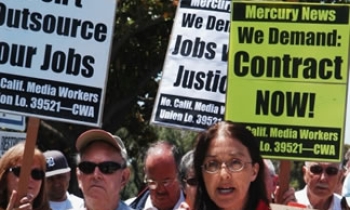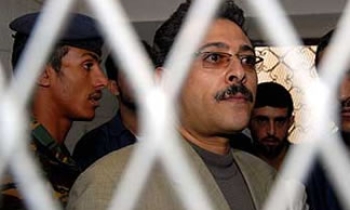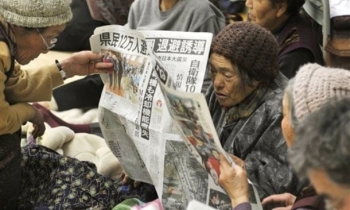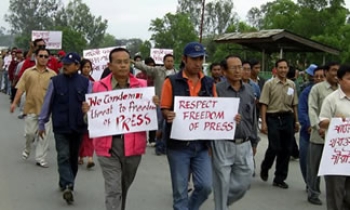Was a time in my life when waiting for the newspaper boy to deliver my copy of The Hindu was the most agonizing wait of the day. It's not that the delivery boy was late but because I was early and anxious to know the close-of-play score in some test match being played in some other part of the world. Remember these were days before ESPN / Star Sports and the Internet. And yet, when I said "my copy" of The Hindu, I speak loosely.
I lived in a joint family and was fifth in the pecking order to read the newspaper behind my grand uncle, father and two elder brothers! Talk of hand-me-downs! But they did serve those who stood and waited even if the person who waited was fidgeting, peering anxiously over the shoulders at the sports page and not all that patient!
Today I still wait for the newspaper in Bangalore simply because the character of this wonderful city is that things happen a bit later. A wag once said that even Venkatesa Suprabhatam is recited at 8.30 a.m. for the Lord! But that is not the point of this piece. I will stay with the morning newspapers.
Yes, newspapers is right as I have a choice of 10 English newspapers to choose from and hopefully read. Only 11 per cent of India may read English, if my memory serves me right, but the English-reading person in Bangalore is being served with a variety of choice, in the newspaper department at least. But the question I have is very simple. Yes, I have a choice of 10 newspapers to skim, surf, glance and even read.
But how different are they from each other? How clearly are they positioned? Do they stand for anything? If I were to buy only one newspaper instead of the 10 I am now buying, which would I buy? I know what I would buy, but what about the average reader?
Positioning, the battle for my mind
Nearly two decades ago, Al Ries and Jack Trout popularised a concept called "positioning." The logic was simple. Minds are crowded. People are confused. They are disinterested in our offerings and very often don't give a whit. So there is a need for marketers to stand out from their competition. This is something that brands like Volkswagen did brilliantly even earlier with its "Think Small" campaign. Imagine a small German car being launched in post-War America — a land of big cars. Or Avis saying, "We try harder, we are only No.2." Globally brands have tried to own positions and better still, own specific words in consumer's minds. Volvo (notwithstanding its overriding presence in buses here in India) owns the word "safety" worldwide. Volkswagen owns the word "reliable" (A few airline services in India are trying desperately to own the word "delay" without even trying but that is so close to my heart that I shall save it for another day).
So this leads me to the important question, `How differently are the newspapers we read positioned?" Or are they falling over themselves in trying to look and read like each other? Even the pink dailies seem to be competing with the mainlines in tone of voice and editorial content! I wish some of the editors would read how similar their own headlines are to the newspapers they are competing with so aggressively. I remember when Uma Bharti did all her theatrics in Dharwad, no fewer than three newspapers in Bangalore had a headline which read `U (ma) turn,' similarly on the confusion about the `NICE' corridor at Bangalore. I am sure it is not too difficult to find other depressing similarities in other markets and amidst other media vehicles as well.
I remember India Today and Outlook both having cover stories on `New age parenting' the same week... and the story goes on. So what does the reader get? The same metro features, the same wire stories, often the same photographs ... You get the picture?
The tabloid
I remember many years ago a headline in an English tabloid that described Andrew Parker Bowles as "the man who cheerfully laid down his wife for his country." Yes, that's the tone of voice a tabloid can cheerfully adopt. Yes, UK has its fair share of tabloids like the Sun and the Daily Mirror which have their share of scandals and pictures of scantily-clad women. But it is catering to a different reader. The reader who wants to know how lewd Shane Warne's text messages are is different from the reader of The Times or The Guardian in London.
Are our mainline newspapers trying harder to become tabloids in their layout and content? Why do the page three sections of these newspapers look so similar? Barring the same twenty-odd people (at least in Bangalore) does any one really look at these things?
And are slinkily-clad woman a sure-fire sign of future success? I wonder. I am sure newspapers have enough reader research about what their readers like or want. And again, the lady or the tiger choice confronts most of us. In our desire to get younger readers, are we forsaking our older, more stable readers? And is it young people who want all this? After all, unlike older people, they can get this in flesh and blood! So why seek it out in a newspaper?
Radio more of the same
The last few years have seen a proliferation of radio channels. Speaking of Bangalore we had Radio City, which was ruling the roost even though there was a rather sluggish Rainbow FM, from AIR. As more and more Bangaloreans got stuck in the traffic (which, incidentally, has become a way of life) they listened to Radio City. Then not only did the traffic jams increase but also the choice of channels that were available to the city of Bangalore. Channels like Radio Mirchi and Hit came on. Suddenly, they all sound desperately similar to each other with their liberal dose of Kannada and the same medley of songs. There is no loyalty.
Last week, Radio Indigo was launched. The station, with its international music, thankfully sounds different. `Big' is another channel that is around the corner. And I see the same depressing similarity in radio in the other cities as well. So here's another challenge of "more of the same" that the listener is being confronted with.
The way to go
A newspaper, notwithstanding its present low cost, is a high involvement product. Whilst marketers of newspapers are frantically and at times unethically going after circulation and dependent advertising revenue they must not lose sight of one thing. Whilst the ad revenue may sustain the newspaper it is important to remember that no one buys a newspaper for the ads. They buy it for the editorial content. They buy it for news.
They buy it for a point of view. And they are discovering to their chagrin that the point of view is changing with the view.
Newspapers must provide value far beyond their price. And they have been doing this in the past. They can become an integral and indispensable part of the reader's day.
But for them to be able to do that, they must understand the reader. Where does she live? What does she want? What are her concerns and priorities? What does she feel about our offering? Does she see any difference in the competing offerings? Can we be different? The logic that one can get back the money paid for a month's subscriptions of a newspaper from the buyer of old newspapers will lead the reader to soon classify the newspapers as garbage! But is that what we want?
(Ramanujam Sridhar is CEO of Brand-comm)









